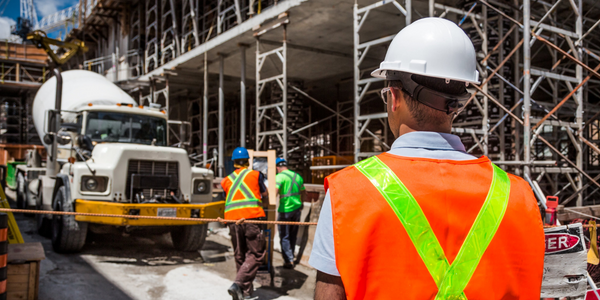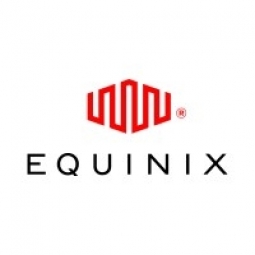技术
- 基础设施即服务 (IaaS) - 混合云
- 平台即服务 (PaaS) - 应用开发平台
适用行业
- 建筑与基础设施
- 国家安全与国防
适用功能
- 物流运输
- 产品研发
用例
- 施工管理
- 篡改检测
服务
- 云规划/设计/实施服务
- 系统集成
客户
AVID 技术
关于客户
AVID Technology提供全面的工程和设计服务,以提高客户在开发和创造先进电子产品方面的成功。客户包括数字媒体创作、制作、后期制作和广播公司。
挑战
全球 SaaS 媒体制作解决方案提供商 Avid Technology, Inc. 需要在制作过程中提高效率并允许创意团队之间进行实时协作,同时不牺牲媒体的性能或安全性。挑战包括以下能力:
- 部署基于云的全球在线编辑套件,以提高在不断变化的商业环境中创建、编辑和实现媒体最终制作的效率。
- 在协作环境中通过快速部署功能获取全球客户访问权限并进行扩展。 § 连接多元化的全球用户群体。
- 确保高可用性,允许用户协作遵循以资产为中心的工作流程。
- 通过与大量全球网络互连,优化应用程序性能和可用性。
- 确保资产可以得到保护和划分,同时允许多个贡献者同时访问。
解决方案
Avid Technology, Inc. 与全球数字基础设施公司 Equinix 合作,提供性能、安全性和连接性,以及支持其在新地区增长的解决方案:
- Equinix 性能中心®。为网络和云提供商提供直接、安全的连接,并将 IT 资源带到物理世界和虚拟世界交汇的数字边缘。
- Microsoft Azure Express Route™。在 Avid 的 IT 环境和协作应用程序之间提供高性能、私密和安全的连接。
- 互连,或私有数据交换。通过面向互连的架构® (IOA®) 战略进行部署,这是一种通过整合人们相遇的物理和虚拟世界来互连人员、位置、云和数据的变革性方法;将 IT 的基本交付架构从孤立和集中式转变为分布式、互连和托管。
- 可扩展的部署。作为第一个举措,在德克萨斯州达拉斯部署,扩展目标是法兰克福和香港。
运营影响
数量效益

Case Study missing?
Start adding your own!
Register with your work email and create a new case study profile for your business.
相关案例.

Case Study
IoT System for Tunnel Construction
The Zenitaka Corporation ('Zenitaka') has two major business areas: its architectural business focuses on structures such as government buildings, office buildings, and commercial facilities, while its civil engineering business is targeted at structures such as tunnels, bridges and dams. Within these areas, there presented two issues that have always persisted in regard to the construction of mountain tunnels. These issues are 'improving safety" and "reducing energy consumption". Mountain tunnels construction requires a massive amount of electricity. This is because there are many kinds of electrical equipment being used day and night, including construction machinery, construction lighting, and ventilating fan. Despite this, the amount of power consumption is generally not tightly managed. In many cases, the exact amount of power consumption is only ascertained when the bill from the power company becomes available. Sometimes, corporations install demand-monitoring equipment to help curb the maximum power demanded. However, even in these cases, the devices only allow the total volume of power consumption to be ascertained, or they may issue warnings to prevent the contracted volume of power from being exceeded. In order to tackle the issue of reducing power consumption, it was first necessary to obtain an accurate breakdown of how much power was being used in each particular area. In other words, we needed to be able to visualize the amount of power being consumed. Safety, was also not being managed very rigorously. Even now, tunnel construction sites often use a 'name label' system for managing entry into the work site. Specifically, red labels with white reverse sides that bear the workers' names on both sides are displayed at the tunnel work site entrance. The workers themselves then flip the name label to the appropriate side when entering or exiting from the work site to indicate whether or not they are working inside the tunnel at any given time. If a worker forgets to flip his or her name label when entering or exiting from the tunnel, management cannot be performed effectively. In order to tackle the challenges mentioned above, Zenitaka decided to build a system that could improve the safety of tunnel construction as well as reduce the amount of power consumed. In other words, this new system would facilitate a clear picture of which workers were working in each location at the mountain tunnel construction site, as well as which processes were being carried out at those respective locations at any given time. The system would maintain the safety of all workers while also carefully controlling the electrical equipment to reduce unnecessary power consumption. Having decided on the concept, our next concern was whether there existed any kind of robust hardware that would not break down at the construction work site, that could move freely in response to changes in the working environment, and that could accurately detect workers and vehicles using radio frequency identification (RFID). Given that this system would involve many components that were new to Zenitaka, we decided to enlist the cooperation of E.I.Sol Co., Ltd. ('E.I.Sol') as our joint development partner, as they had provided us with a highly practical proposal.

Case Study
Splunk Partnership Ties Together Big Data & IoT Services
Splunk was faced with the need to meet emerging customer demands for interfacing IoT projects to its suite of services. The company required an IoT partner that would be able to easily and quickly integrate with its Splunk Enterprise platform, rather than allocating development resources and time to building out an IoT interface and application platform.

Case Study
Bridge monitoring in Hamburg Port
Kattwyk Bridge is used for both rail and road transport, and it has played an important role in the Port of Hamburg since 1973. However, the increasing pressure from traffic requires a monitoring solution. The goal of the project is to assess in real-time the bridge's status and dynamic responses to traffic and lift processes.

Case Study
Bellas Landscaping
Leading landscaping firm serving central Illinois streamlines operations with Samsara’s real-time fleet tracking solution: • 30+ vehicle fleet includes International Terrastar dump trucks and flatbeds, medium- and light-duty pickups from Ford and Chevrolet. Winter fleet includes of snow plows and salters.

Case Study
Condition Based Monitoring for Industrial Systems
A large construction aggregate plant operates 10 high horsepower Secondary Crusher Drive Motors and associated conveyor belts, producing 600 tons of product per hour. All heavy equipment requires maintenance, but the aggregate producer’s costs were greatly magnified any time that the necessary maintenance was unplanned and unscheduled. The product must be supplied to the customers on a tight time schedule to fulfill contracts, avoid penalties, and prevent the loss of future business. Furthermore, a sudden failure in one of the drive motors would cause rock to pile up in unwanted locations, extending the downtime and increasing the costs.Clearly, preventative maintenance was preferable to unexpected failures. So, twice each year, the company brought in an outside vendor to attach sensors to the motors, do vibration studies, measure bearing temperatures and attempt to assess the health of the motors. But that wasn’t enough. Unexpected breakdowns continued to occur. The aggregate producer decided to upgrade to a Condition Based Monitoring (CBM) sensor system that could continually monitor the motors in real time, apply data analytics to detect changes in motor behavior before they developed into major problems, and alert maintenance staff via email or text, anywhere they happened to be.A wired sensor network would have been cost prohibitive. An aggregate plant has numerous heavy vehicles moving around, so any cabling would have to be protected. But the plant covers 400 acres, and the cable would have to be trenched to numerous locations. Cable wasn’t going to work. The aggregate producer needed a wireless solution.




